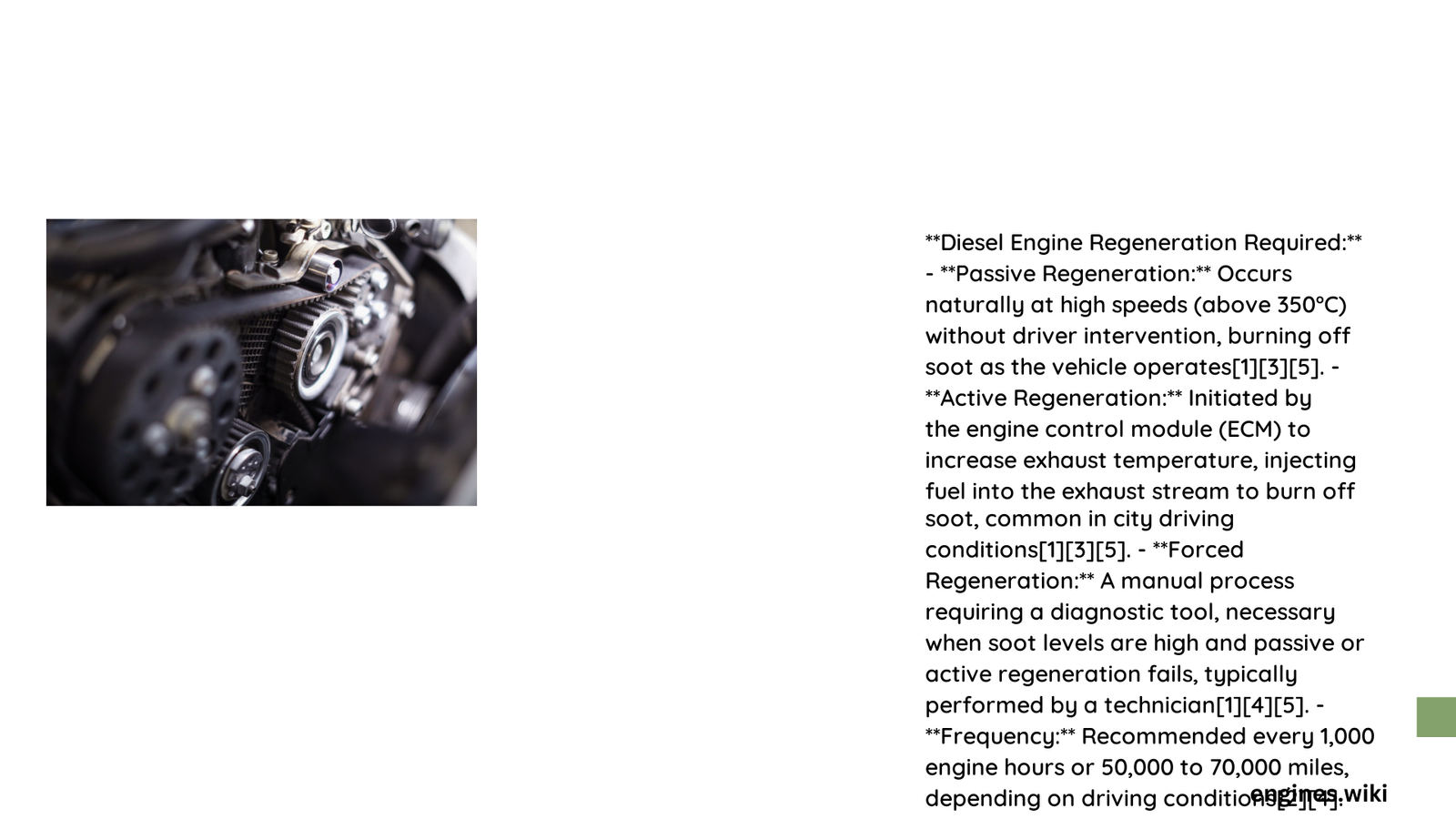Diesel engine regeneration is a critical maintenance process that prevents particulate matter buildup in diesel particulate filters (DPF), ensuring optimal engine performance and reducing harmful emissions. Modern diesel engines require systematic regeneration to maintain efficiency, remove accumulated soot, and prevent potential mechanical complications that could lead to expensive repairs or complete engine failure.
What Are the Primary Indicators of Diesel Engine Regeneration Need?
Diesel engine regeneration becomes necessary when specific performance indicators emerge. Understanding these signals helps vehicle owners proactively manage their engine’s health.
Key Performance Indicators
| Indicator | Description | Potential Impact |
|---|---|---|
| Fuel Consumption | Noticeable decrease in miles per gallon | Reduced engine efficiency |
| Engine Temperature | Elevated temperature readings | Potential regeneration cycle |
| Idle RPM | Higher than normal idle speed | Active regeneration process |
| Dashboard Warnings | DPF or exhaust system temperature alerts | Immediate regeneration required |
How Does Diesel Engine Regeneration Work?
Diesel engine regeneration involves two primary methods:
Passive Regeneration
- Occurs during high-speed highway driving
- Exhaust gases naturally reach temperatures sufficient to burn accumulated soot
- No additional intervention required
Active Regeneration
- Initiated by engine control unit (ECU)
- Injects additional fuel into exhaust stream
- Raises exhaust temperature to approximately 1100°F
- Burns off particulate matter in diesel particulate filter
What Temperature Thresholds Trigger Regeneration?

Critical temperature ranges play a significant role in successful diesel engine regeneration:
- Exhaust Gas Temperature:
- Minimum: 900°F
- Optimal: 1100°F
-
Maximum: 1250°F
-
Engine Coolant Temperature:
- Safe Range: Below 170°F
- Parked Regeneration Threshold: 76.6°C
What Are Potential Regeneration Challenges?
Vehicle owners might encounter several challenges during the regeneration process:
- Incomplete Regeneration
- Frequent short trips
- Low-speed urban driving
-
Interrupted regeneration cycles
-
Performance Implications
- Increased fuel consumption
- Reduced engine efficiency
- Potential long-term DPF damage
How Often Should Diesel Engine Regeneration Occur?
Regeneration frequency depends on multiple factors:
- Driving conditions
- Vehicle usage pattern
- Diesel fuel quality
- Maintenance history
Recommended Regeneration Intervals
- City Driving: Every 200-300 miles
- Highway Driving: Every 400-500 miles
- Heavy Load Conditions: More frequent regeneration needed
Professional Maintenance Recommendations
- Regular diagnostic scans
- Monitor dashboard indicators
- Complete full regeneration cycles
- Use high-quality diesel fuel
- Perform scheduled maintenance
Cost Considerations
- Passive Regeneration: No additional cost
- Active Regeneration: Minimal fuel consumption
- Forced Regeneration: $200-$500 professional service
Conclusion
Proactive diesel engine regeneration management prevents costly repairs and maintains optimal vehicle performance. Understanding the process, recognizing indicators, and following manufacturer guidelines ensures long-term engine health.
